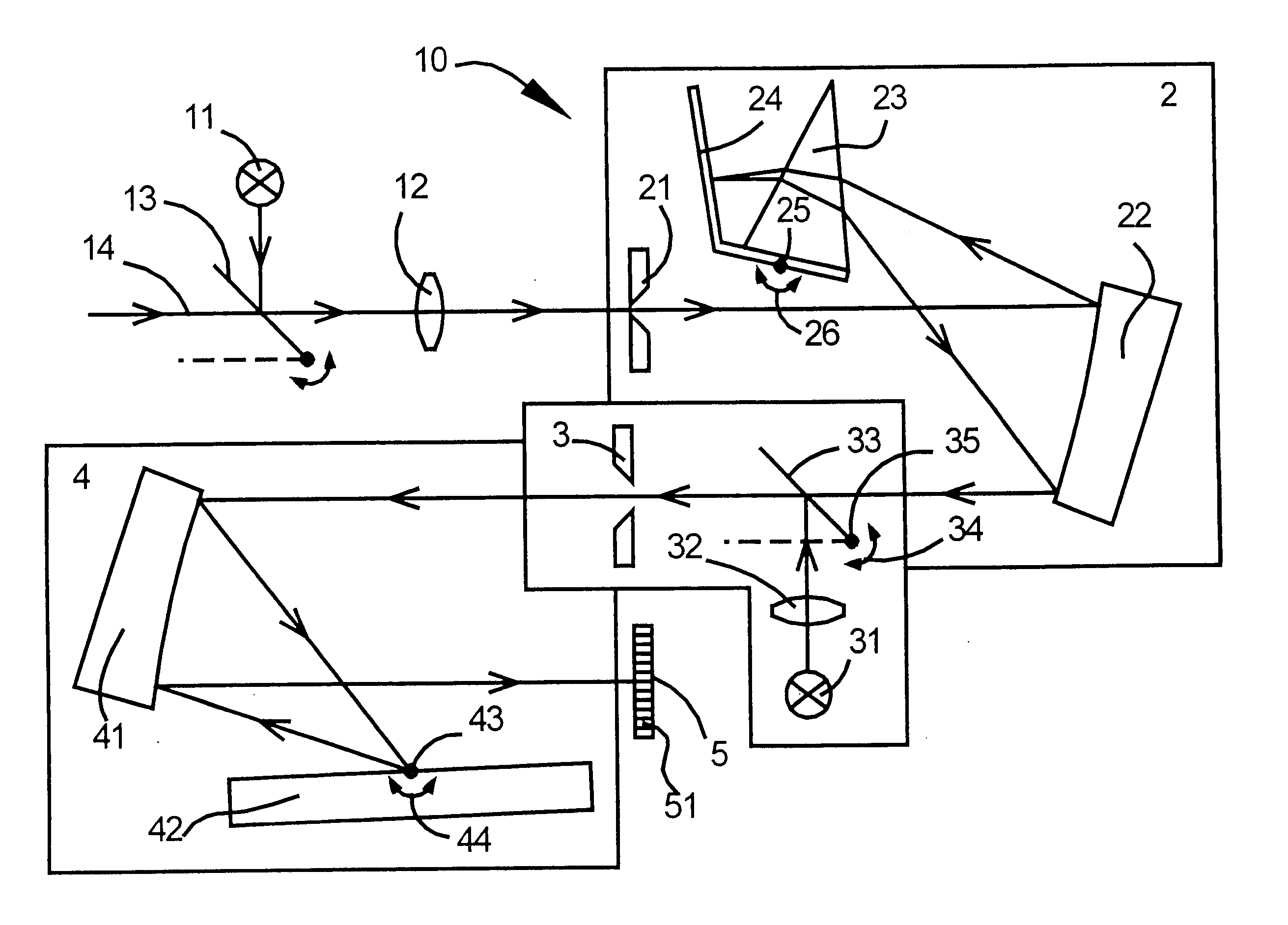Assembly and method for wavelength calibration in an echelle spectrometer
- Summary
- Abstract
- Description
- Claims
- Application Information
AI Technical Summary
Benefits of technology
Problems solved by technology
Method used
Image
Examples
Embodiment Construction
[0030] In FIG. 1 numeral 10 denotes a spectrometer assembly. The assembly 10 comprises a pre-monochromator 2 and an echelle spectrometer 4. Numeral 21 denotes the entrance slit of the pre-monochromator 2. It is illuminated by a light source 11 with a continuous wavelength spectrum for calibration. Such a light source is for example a Xenon high pressure short arc lamp. For this purpose a rotatable mirror 13 and a lens 12 are arranged in the measuring optical path 14 as an imaging element. The entrance slit 21 has a fixed slit width of 25 microns, corresponding to the width of a detector element 51 of a CCD-linear array 5 used as a spatially resolving light detector. The entrance slit 21 forms the field stop for the double spectrometer assembly and defines the width of a monochromatic beam at the location of the detector 5.
[0031] The incident divergent light beam is deflected and collimated by a paraboloidal mirror 22. The parallel light passes through a prism 23. Thereby the light ...
PUM
 Login to View More
Login to View More Abstract
Description
Claims
Application Information
 Login to View More
Login to View More - R&D
- Intellectual Property
- Life Sciences
- Materials
- Tech Scout
- Unparalleled Data Quality
- Higher Quality Content
- 60% Fewer Hallucinations
Browse by: Latest US Patents, China's latest patents, Technical Efficacy Thesaurus, Application Domain, Technology Topic, Popular Technical Reports.
© 2025 PatSnap. All rights reserved.Legal|Privacy policy|Modern Slavery Act Transparency Statement|Sitemap|About US| Contact US: help@patsnap.com



